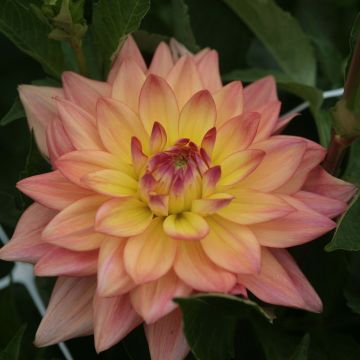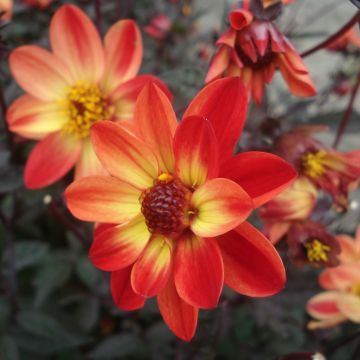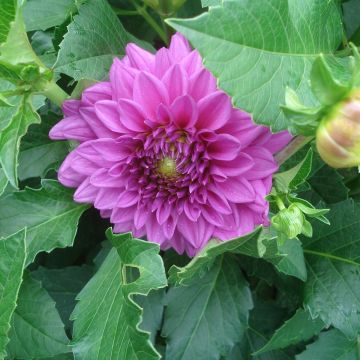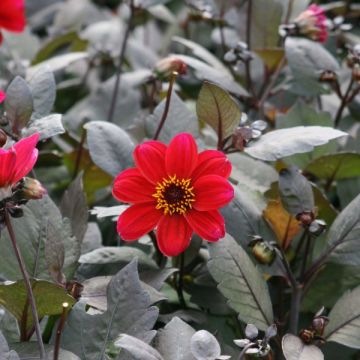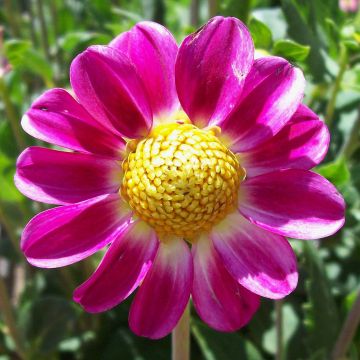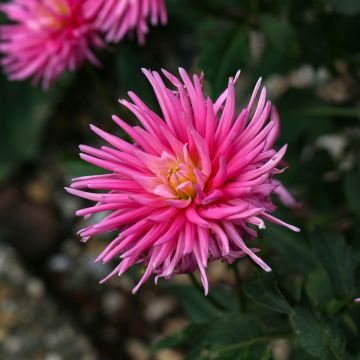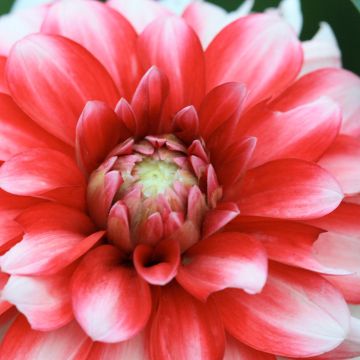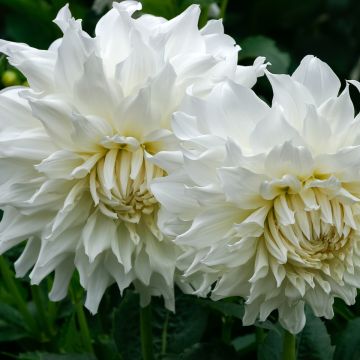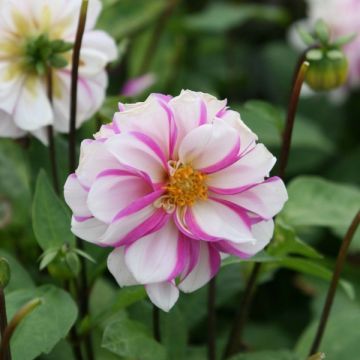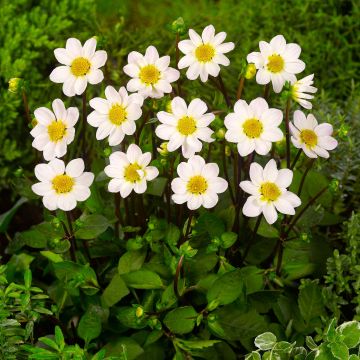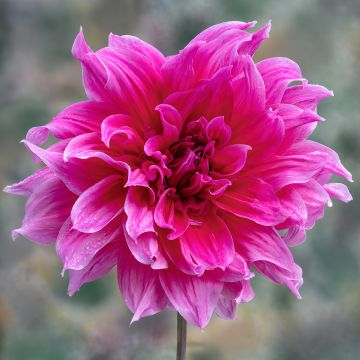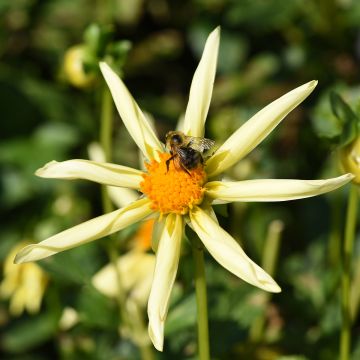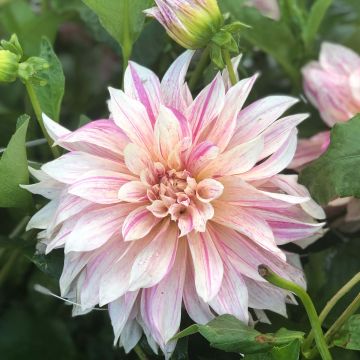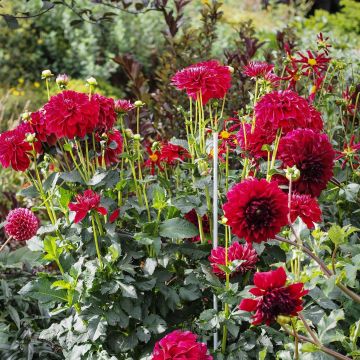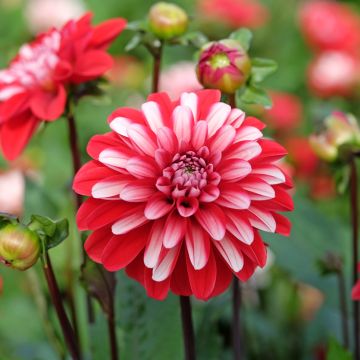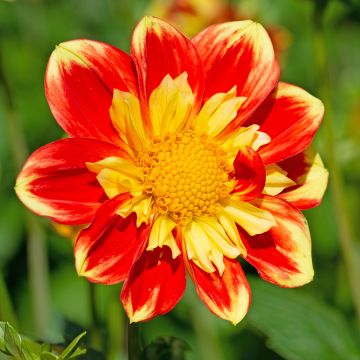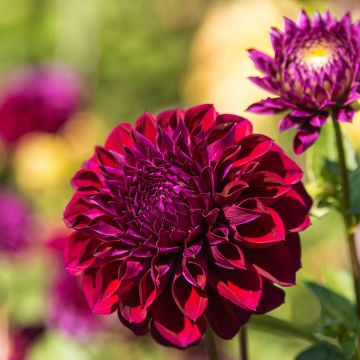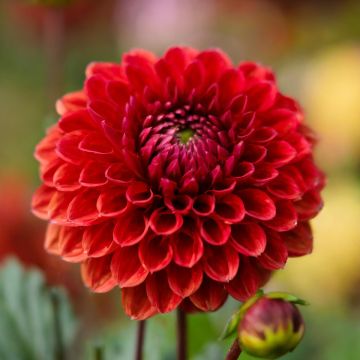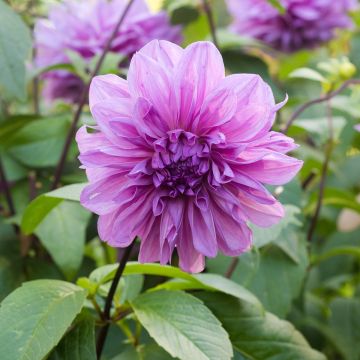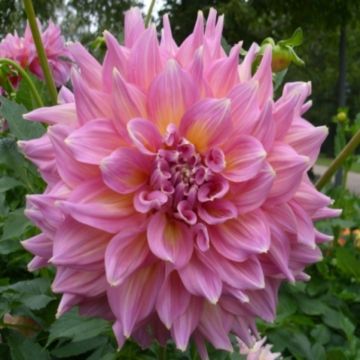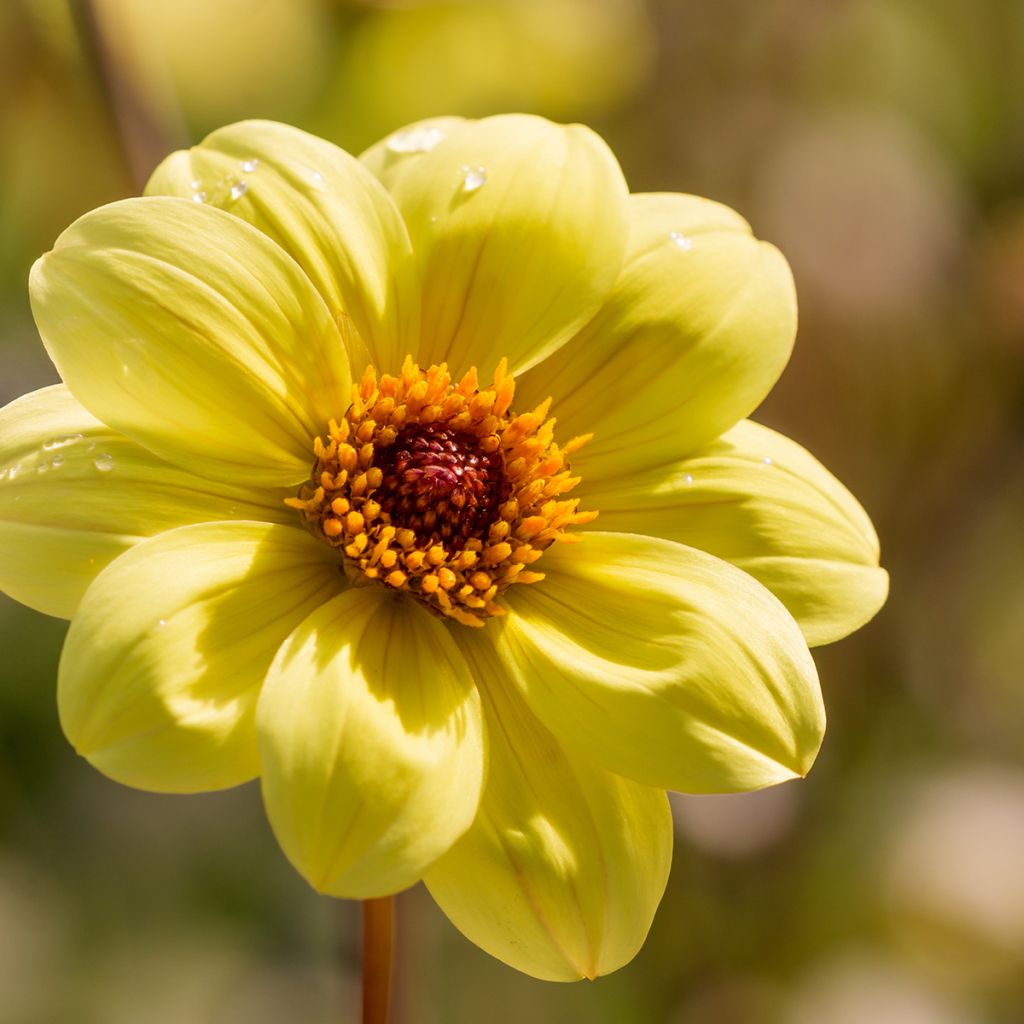

Dahlia Happy Single Party
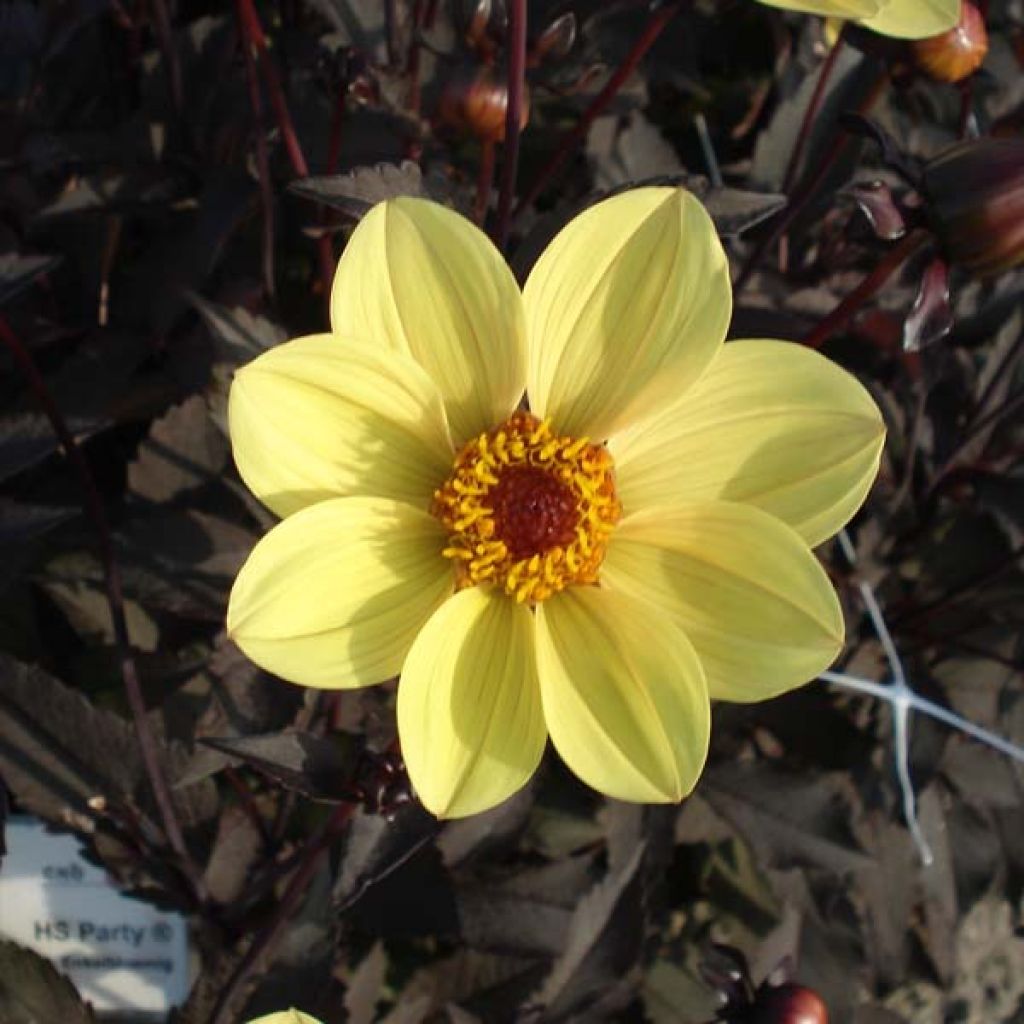

Dahlia Happy Single Party
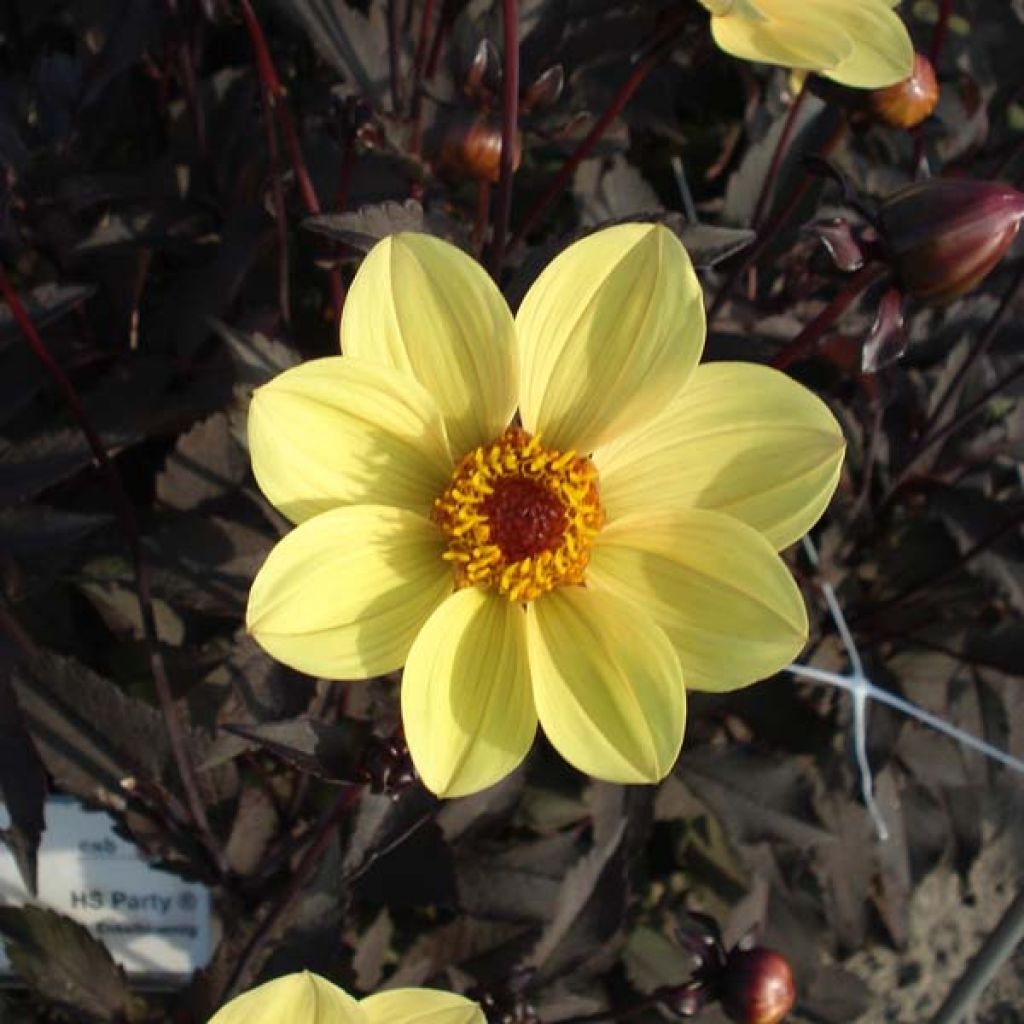

Dahlia Happy Single Party
Dahlia Happy Single Party
Dahlia Happy Single Party
Dahlia
This item cannot be shipped to the selected country
Delivery charge from €5.90
More information
Schedule delivery date,
and select date in basket
This plant carries a 6 months recovery warranty
More information
We guarantee the quality of our plants for a full growing cycle, and will replace at our expense any plant that fails to recover under normal climatic and planting conditions.
From €5.90 for pickup delivery and €6.90 for home delivery
Express home delivery from €8.90.

Does this plant fit my garden?
Set up your Plantfit profile →
Description
The Dahlia Happy Single Party offers all the beauty of masses of single, canary yellow flowers with a yellow-orange heart, perfectly complemented by chocolate-colored cut foliage. The plant is floriferous, compact, and well-branched, ideal for terraces or borders. Its long summer to autumn flowering is highly attractive to pollinators. Plant in a sunny location with well-drained soil.
Dahlias, from the asteraceae family, are originally native to the high plateaus of Mexico. Currently, the approximately 25,000 horticultural varieties created by humans have taken over gardens worldwide, much to our delight.
The variety 'Happy Single Party' belongs to the horticultural group of dwarf dahlias with single flowers. The plant will not exceed 70 cm (28in) in height and 40 cm (16in) in width. It has a bushy, branched, and compact habit that does not require staking. The flowering period for this variety is from July to October. The heads measure 8 cm (3in) in diameter and resemble simple corollas composed of a row of yellow ligules arranged in a collar around a central cluster of fertile florets that transition from orange to golden yellow to brown. The highly branched stems are hollow, and the leaves are opposite and divided into 3 or 5 finely toothed lobes. The leaves and stems have a rare dark brown colour with black reflections. To promote continuous flowering and extend the blooming period, be sure to remove faded flowers.
The varieties in the 'Happy Single' series are adorable dwarf landscape dahlias with vibrant colours. 'Party', with its canary yellow flowers, pairs particularly well with white or yellow cosmos, California poppies, and Lychnis coronaria. It will create colourful spots in the front of borders alongside Echinaceas, blue nepetas, and white cactus dahlias. Also consider pairing it with Pennisetum villosum, a lovely feathery grass, to add softness and delicacy to the decor. This variety is particularly well-suited for container gardening, making it easy to adorn terraces or balconies.
As star plants in borders and cottage gardens, dahlias effortlessly accompany the most beautiful flowers as well as the humblest vegetables. They can be used to create beautiful flowering containers or charming bouquets. In Mexico, this tuberous plant was initially cultivated as a root vegetable for consumption. However, its mediocre taste relegated it to the status of an ornamental plant. Since then, the fascination with their beautiful exuberance has never waned.
Report an error about the product description
Plant habit
Flowering
Foliage
Botanical data
Dahlia
Happy Single Party
Asteraceae
Dahlia
Cultivar or hybrid
Other Dwarf Dahlias
Planting and care
The Dahlia 'Happy Single Party' is easy to grow in all regions. For abundant flowering, it is good to follow a few simple rules. Plant the tubers in a sunny location after the last frost. Rich, fresh, and well-drained soils are perfect. However, stagnant moisture would promote tuber rot. Feel free to amend the soil with compost and sand if necessary. Work the soil deeply and enrich it, for example, with crushed horn or dehydrated blood. Place your tuber and crumble the soil well to fill without air pockets. Your dahlia should be covered with about 6 cm (2in) of soil. At the end of planting, water once abundantly and then repeat this watering regularly for the first 6 weeks to help with rooting. Dahlias are sensitive to cold, so they need to be overwintered. In November, the first frost will blacken the foliage, which is the time to dig them up. Carefully remove the tubers, taking off as much soil as possible. Let the foliage dry so that the tubers can replenish their reserves. Then cut the stems to 10 cm (4in). Spread your bulbs in a crate on newspaper. Store in a frost-free, dry, cool, and dark place, such as a garage or attic.
In the southern regions, close to the coast, where there are few days of frost per year, it is possible to leave them in place. In this case, simply cover the soil with a layer of leaves or straw for protection.
Planting period
Intended location
Care
-
, onOrder confirmed
Reply from on Promesse de fleurs
Dahlias
Haven't found what you were looking for?
Hardiness is the lowest winter temperature a plant can endure without suffering serious damage or even dying. However, hardiness is affected by location (a sheltered area, such as a patio), protection (winter cover) and soil type (hardiness is improved by well-drained soil).

Photo Sharing Terms & Conditions
In order to encourage gardeners to interact and share their experiences, Promesse de fleurs offers various media enabling content to be uploaded onto its Site - in particular via the ‘Photo sharing’ module.
The User agrees to refrain from:
- Posting any content that is illegal, prejudicial, insulting, racist, inciteful to hatred, revisionist, contrary to public decency, that infringes on privacy or on the privacy rights of third parties, in particular the publicity rights of persons and goods, intellectual property rights, or the right to privacy.
- Submitting content on behalf of a third party;
- Impersonate the identity of a third party and/or publish any personal information about a third party;
In general, the User undertakes to refrain from any unethical behaviour.
All Content (in particular text, comments, files, images, photos, videos, creative works, etc.), which may be subject to property or intellectual property rights, image or other private rights, shall remain the property of the User, subject to the limited rights granted by the terms of the licence granted by Promesse de fleurs as stated below. Users are at liberty to publish or not to publish such Content on the Site, notably via the ‘Photo Sharing’ facility, and accept that this Content shall be made public and freely accessible, notably on the Internet.
Users further acknowledge, undertake to have ,and guarantee that they hold all necessary rights and permissions to publish such material on the Site, in particular with regard to the legislation in force pertaining to any privacy, property, intellectual property, image, or contractual rights, or rights of any other nature. By publishing such Content on the Site, Users acknowledge accepting full liability as publishers of the Content within the meaning of the law, and grant Promesse de fleurs, free of charge, an inclusive, worldwide licence for the said Content for the entire duration of its publication, including all reproduction, representation, up/downloading, displaying, performing, transmission, and storage rights.
Users also grant permission for their name to be linked to the Content and accept that this link may not always be made available.
By engaging in posting material, Users consent to their Content becoming automatically accessible on the Internet, in particular on other sites and/or blogs and/or web pages of the Promesse de fleurs site, including in particular social pages and the Promesse de fleurs catalogue.
Users may secure the removal of entrusted content free of charge by issuing a simple request via our contact form.
The flowering period indicated on our website applies to countries and regions located in USDA zone 8 (France, the United Kingdom, Ireland, the Netherlands, etc.)
It will vary according to where you live:
- In zones 9 to 10 (Italy, Spain, Greece, etc.), flowering will occur about 2 to 4 weeks earlier.
- In zones 6 to 7 (Germany, Poland, Slovenia, and lower mountainous regions), flowering will be delayed by 2 to 3 weeks.
- In zone 5 (Central Europe, Scandinavia), blooming will be delayed by 3 to 5 weeks.
In temperate climates, pruning of spring-flowering shrubs (forsythia, spireas, etc.) should be done just after flowering.
Pruning of summer-flowering shrubs (Indian Lilac, Perovskia, etc.) can be done in winter or spring.
In cold regions as well as with frost-sensitive plants, avoid pruning too early when severe frosts may still occur.
The planting period indicated on our website applies to countries and regions located in USDA zone 8 (France, United Kingdom, Ireland, Netherlands).
It will vary according to where you live:
- In Mediterranean zones (Marseille, Madrid, Milan, etc.), autumn and winter are the best planting periods.
- In continental zones (Strasbourg, Munich, Vienna, etc.), delay planting by 2 to 3 weeks in spring and bring it forward by 2 to 4 weeks in autumn.
- In mountainous regions (the Alps, Pyrenees, Carpathians, etc.), it is best to plant in late spring (May-June) or late summer (August-September).
The harvesting period indicated on our website applies to countries and regions in USDA zone 8 (France, England, Ireland, the Netherlands).
In colder areas (Scandinavia, Poland, Austria...) fruit and vegetable harvests are likely to be delayed by 3-4 weeks.
In warmer areas (Italy, Spain, Greece, etc.), harvesting will probably take place earlier, depending on weather conditions.
The sowing periods indicated on our website apply to countries and regions within USDA Zone 8 (France, UK, Ireland, Netherlands).
In colder areas (Scandinavia, Poland, Austria...), delay any outdoor sowing by 3-4 weeks, or sow under glass.
In warmer climes (Italy, Spain, Greece, etc.), bring outdoor sowing forward by a few weeks.

































